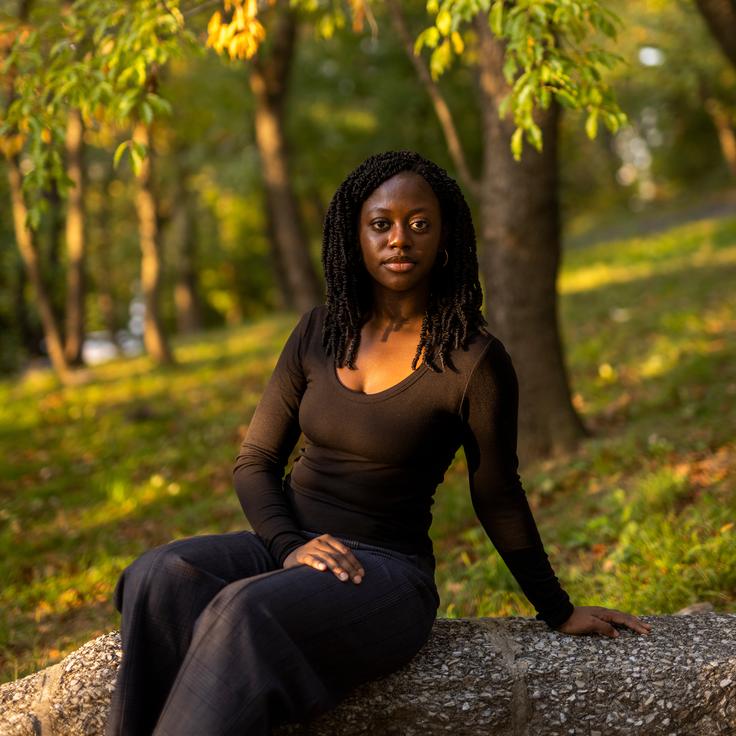Earlier this year, when news broke that the AI-generated robot rapper FN Meka “signed” with Capitol Records Music Group, social media all but lost it. With all the exceptional living and breathing talent in the U.S., it made no sense that a major record label would give a sims-like character an opportunity that human artists would die for. A short glance at any content featuring the character was enough to know the move was, once again, about the profitability of Black culture backed by harmful stereotypes about my community.
In the days following the hype — which ended with FN Meka being dropped after a day of social media backlash — TK Saccoh, founder of The Darkest Hue, an Instagram account designed to create community and call out colorism, used her social page to start a crucial conversation: “Are Black people just virtual beings?” she asked her followers. Through the examples of FN Meka and other famous avatars such as Shudu, Saccoh argues that the perpetuation of light-skin bias is evolving in an insidious way.
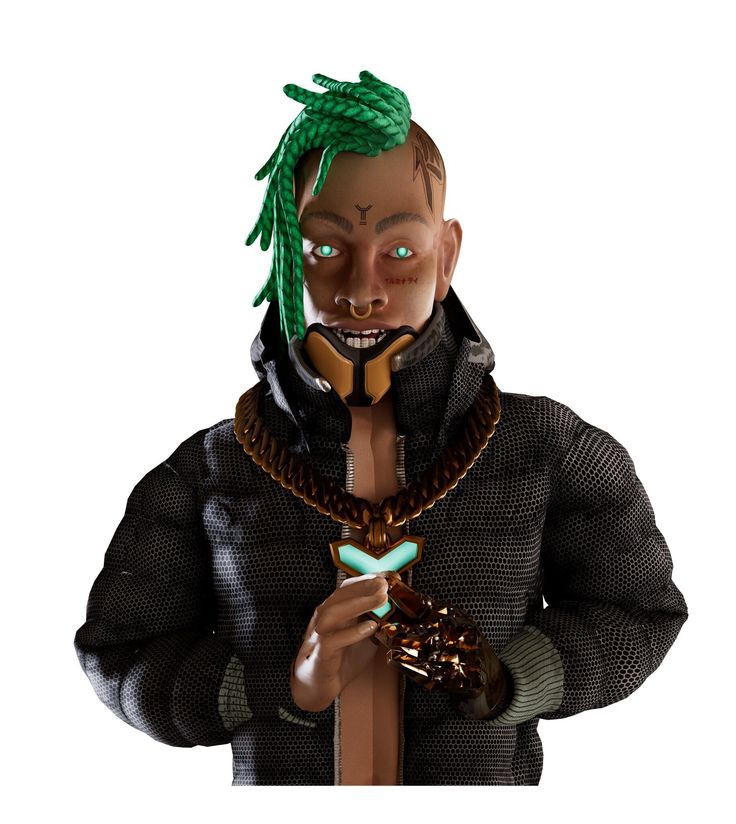
Right away, FN Meka’s virtual presence was a trigger for me. It brought up feelings similar to when a therapist once asked me how I would feel if my skin color was indeed the reason I wasn’t being presented with the same opportunities as my white and lighter-skinned BIPOC counterparts. I’m still unsure if she was expressing her own discriminatory beliefs or if she was just being honest about how colorism works against people with skin darker than her own.
In 2022, our society appears to thrive off the illusion of equality. Experiencing colorism from people inside and outside one’s community, and recognizing it as anti-blackness feels like a gut punch that leaves me quietly gasping for air. It’s an experience that is difficult to put into words, so more often than not, people choose not to.
“Colorism is so isolating. So many other people are experiencing it, but there’s a stigma about being vulnerable about it. You just suppress it and keep it to yourself,” said Saccoh when I asked her about her motivation to focus her online presence on combating colorism.
Two years ago, Saccoh launched the profile as a safe space for Black and brown dark-skinned femmes to discuss their experiences — she found they weren’t sufficiently represented on social media.
“I’d keep scrolling, keep scrolling, keep scrolling, and I’d see one type of Black person or one type of racially ambiguous person,” she said. “I started to curate my feed following dark skin girls, and my feed quickly became filtered to serve me, and my needs.”
There is such an over-saturation of a “certain type of Black girl.” And that was by design, of course.
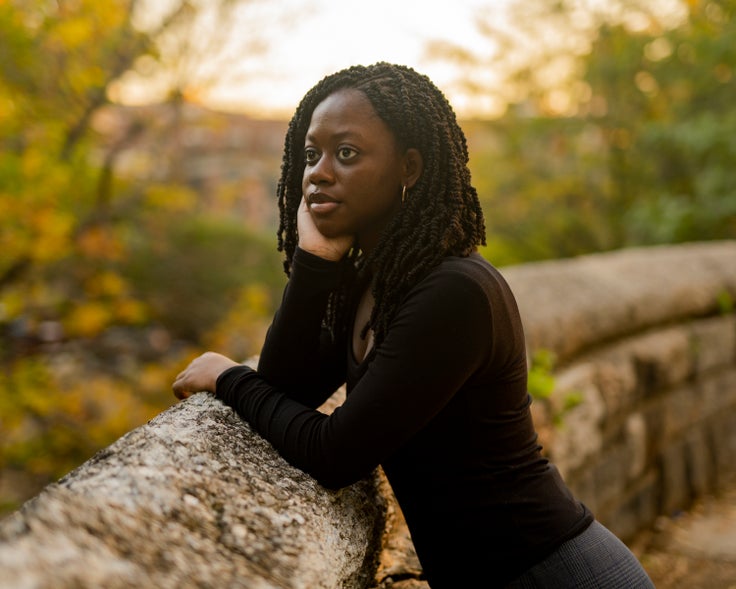
Saccoh, now 22, migrated to the U.S. from Sierra Leone when she was 5, first moving to Washington state (where she recalls first experiencing observable racism) and then to Philadelphia when she was 8 years old. Before moving, she recalls looking forward to being in spaces with people that looked like her, but she quickly found herself on the receiving end of dark-skin and xenophobic jokes by other Black people.
“I would get very explicit comments from classmates like, ‘oh you’re too Black, you’re ugly,’ there was no need to read between the lines,” said Saccoh. Around this time, she also became more aware of the widespread use of bleaching cream in her home country, Sierra Leone. “I internalized these things even before I had the language of colorism.”
As an adult, I still struggle with finding words to explain colorism when I am experiencing it, and often question whether I am overreacting. A misconception often passed around when discussing colorism is that it is based on “preference,” making it difficult to call out. However, preferring lighter skin is an indelible symptom of a colonized mind where Eurocentric standards of beauty reign and darker-hued skin is seen as undesirable.
Dr. Seanna Leath, an assistant professor of psychological and brain science at Washington State University in St. Louis, emphasizes the roots of colorism as a tool used by white supremacists during slavery to create dissension amongst enslaved people.
“These were practices like only allowing lighter skin people to work inside the house, or giving lighter skin people certain privileges that then led to a division amongst Black folks,” said Leath.
However, the stench of these white-centric practices continues to show up in the content we consume today, from music to beauty tutorials that teach us how to contour our noses to look more narrow.
“When you ask how colorism is different than racism, I think that you are trying to tap into the notion that colorism exists within the Black community and other communities of color, where Black folks can’t be racist towards other Black folks, but we can show prejudicial beliefs or bias to one another,” said Leath.
This intra-racial prejudice is just one of the critical issues Saccoh looks to address using her platform.
“It started with me just talking about colorism, but I think colorism is an entryway for us to talk about other intra-racial violence,” said Saccoh. This violence includes sexism, featurism, fatphobia, queerphobia, ableism, and so on. “It’s been really interesting to have this digital space that is a little controversial, but I think that’s why my space is unique because there is a lot of accountability building.”
Fostering open dialogues about colorism is essential because of the ways colorism affects people in real life. These biases often show up not just on the ’gram and TikTok, but in the lack of access to safety, education, and care for dark skin femmes and poor, queer, fat and disabled people. The most recent trending example of this is the case of Pieper Lewis ― the 17-year-old girl Iowa courts ruled to pay $150,000 in restitution for killing her accused rapist.
Saccoh’s platform points out the toxic intricacies that lead to such detrimental consequences. “I’ve been able to highlight the interpersonal struggles of dark-skin women and girls, while also highlighting the structural consequences,” she said.
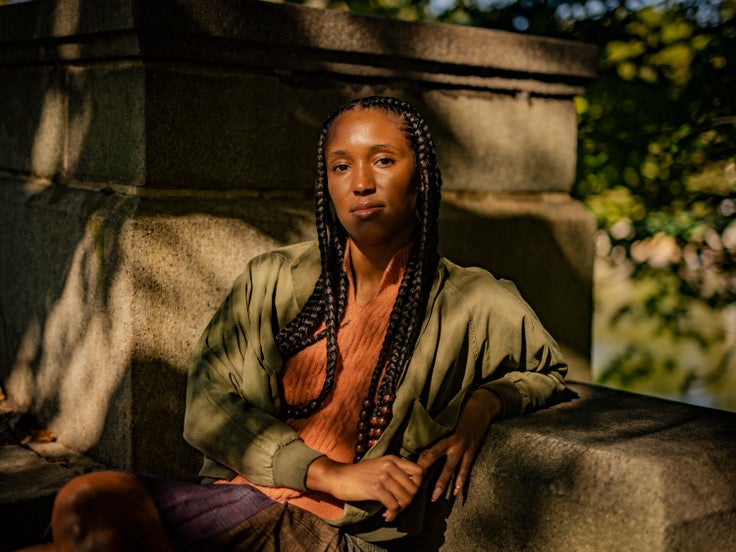
Growing up, I first became aware of colorism sitting in the hair salon and talking about what I experienced in the salon with my grandmother, an Afro-Latina from Panama. I would tell her how the women in the salon handled clients with deeper skin tones and complexions as if they were a burden, while women with lighter skin and looser curls were treated tenderly and taken ahead of other clients.
My grandmother would listen and tell similar stories — specifically about catching people speaking poorly of her or other darker skin people in Spanish. “Sé leerlo, escribirlo, y hablarlo,” ― “I can read it, write it, and speak it,” she would say when people were surprised she understood.
There is a stifling type of damage that lingers when something as toxic as white and light-skinned supremacy is a part of your childhood. In the digital age, these feelings are complicated by the notion that an algorithm determines everything. How do you fight a monster that is hidden in plain sight? For Saccoh, the birth of FN Meka, was a timely and crucial opportunity to call it out.
The computer-generated rapper, who amassed millions of followers and views on TikTok, was created by Factory New, which claimed to be a futuristic music company. When news of the deal went public, Ryan Ruden, Capitol Music Group’s executive vice president of experiential marketing & business development, told told Music Business World that FN Meka “is just a preview of what’s to come.”
Former Factory New co-founder Anthony Martini said, “Think about the biggest stars in the world. How many of them are just vessels for commercial endeavors?” These comments are nothing short of jarring when you consider FN Meka’s content: video game-like reenactments littered with harsh stereotypes about Black people, the n-word, and disturbing depictions of things like police brutality.
In one post, Saccoh puts words to what we were experiencing. She points out the way technology is reducing ― and sometimes, even erasing ― the identities of people with brown skin to empty vessels meant to produce products that non-Black people profit from. She also points out how the internet has made surveilling darker skin communities, spreading stereotypes and exploiting darker-skinned bodies more familiar.
And FN Meka is just one example of this. “If you go on Tiktok, if you go on Instagram, if you go on whatever, Black people are producing the culture,” Saccoh pointed out. “They’re mining the data, measuring what’s popular, what’s in. They’re sort of digitally surveilling Black people online, and they’re turning that into profit.”
Not only was the content of his music outsourced, but the computer-generated rapper’s voice was that of a Black Houston-based rapper, Kyle the Hooligan, who claims he was not paid for his contributions. “They abstracted him for all the value they thought he had, and they sort of tossed him away,” said Saccoh.
For all intents and purposes, tech is absolutely in on perpetuating colorism, whether the industry wants to recognize it or not. The context informs Saccoh’s advocacy, since contemporary light-skin biar (and racism in general) has begun to take on new forms online.
For example, AI seamlessly makes decisions for us daily, from how visible a job application is to a hiring manager, to the functioning of healthcare technologies. Researchers are now noticing how and why our machines are making decisions that prioritize and match the needs and values of white men.
There are some tech companies making efforts to begin to address this issue. In May, Google integrated The Monk Skin Tone Scale, developed by Havard sociologist Ellis Monk, to further improve its products’ compatibility with darker skin tones. For 10 years, the sociologist studied how skin color impacts the life experience and outcomes of Black people and found significant gaps in areas ranging from education to mental and physical health when comparing lighter and darker-skinned African Americans. His research also found technology mimics these biases.
“There are many instances where AI related to computer vision technologies fails to work as effectively when interacting with darker-skinned individuals,” said Monk. “This includes things such as cameras auto-white balancing not working as well on darker skin to self-driving cars having trouble detecting darker-skinned people as human beings, especially in low light.”
The ultimate goal is for his skin tone scale to replace the existing Fitzpatrick Scale as the industry standard to solve some of his and other researchers’ biggest concerns.
“I’ll add that the problem goes beyond AI. There are many devices, such as pulse oximeters, that use light and computer vision to assess health, which don’t work as well on people of darker skin,” he said. “In the pandemic, that has meant the under-diagnosis and under-treatment of darker-skinned people who have had their oxygen levels potentially overestimated by faulty devices. These technological issues compound long-standing racial inequality in health care access, provision and quality.”
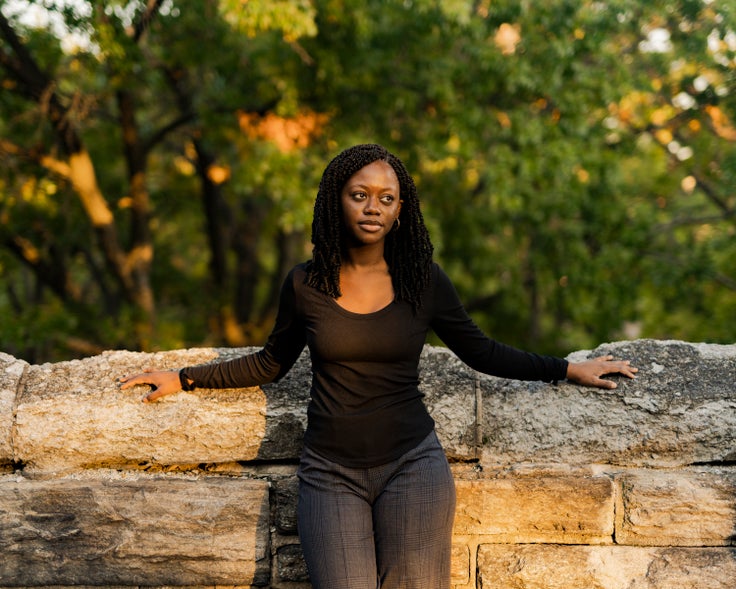
While The Darkest Hue has gained popularity thanks to its splashy slides that call out trends of colorism in neat and digestible bits, Saccoh’s ultimate intention remains apparent. From making ordinary dark skin people more visible to dismantling learned discrimination, she has created a space where dark skin femme-identifying youth can come and learn the language they need to tend to their wounds.
“I want them to acquire the language right now, so they can do the work right now so that later it is not as painful,” she said. “So that they don’t have to wait to understand it’s not them and not blame themselves for how the world treats them.”
